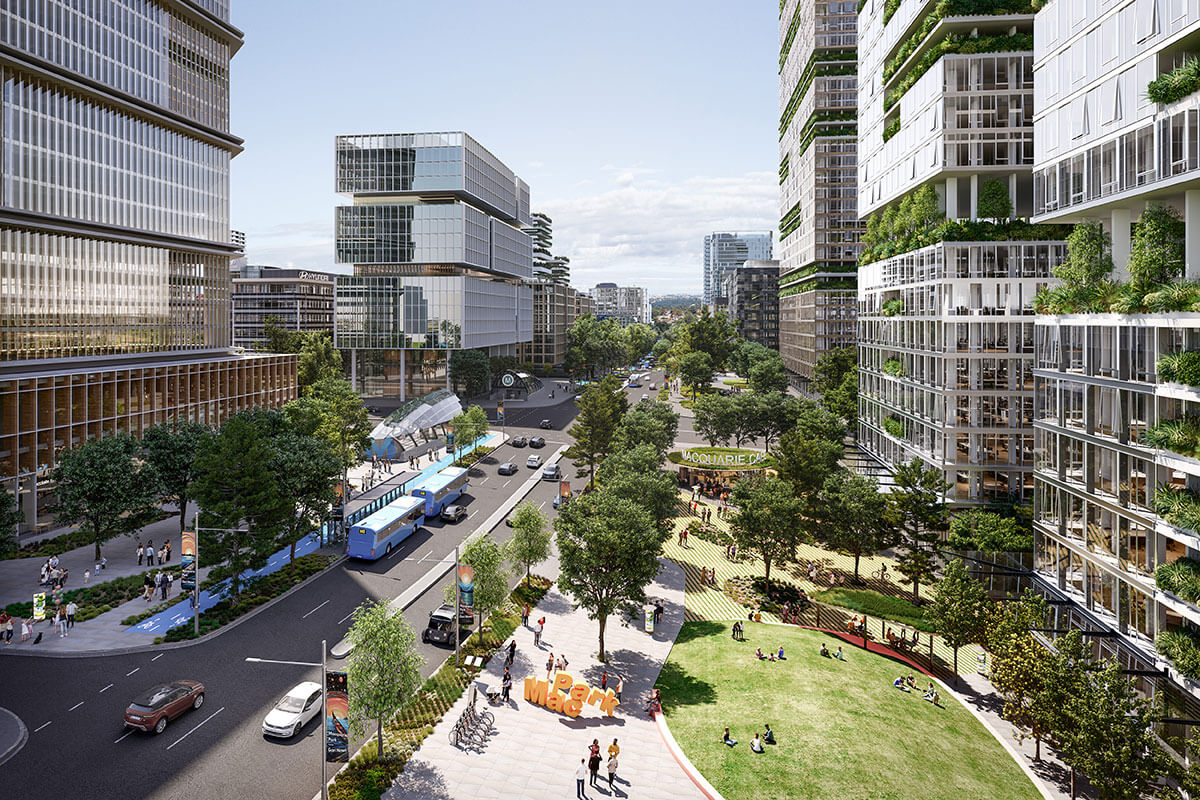
The Billion Dollar Investment Hiding Around Metro Stations
The Billion Dollar Investment Hiding Around Metro Stations
NSW's TOD Policy Creates $50 Billion Investment Opportunity
After 25 years in financial services across Australia, Asia and the US, I've seen plenty of investment opportunities come and go. But I've rarely seen government policy create such a clear runway for commercial real estate returns as NSW's current transit-oriented development framework.
The NSW Government's commitment to TOD precincts around metro and rail stations represents the largest structured commercial property opportunity in Australia's history.
For CFOs, mortgage brokers, and real estate investors who understand the mechanics, this is a government-backed pathway to premium returns.
NSW Government Puts $100 Billion Behind TOD
The NSW Government has committed $100 billion to transport infrastructure through to 2030, with Sydney Metro alone representing the largest public transport project in Australian history.
But here's what most investors miss: the Housing and Productivity Contribution policy requires councils to identify TOD precincts within 400 metres of metro stations and facilitate higher density development.
This isn't just planning policy. It's a legislated requirement that creates predictable development opportunities with government backing.
When I was building digital trading systems for CBA Global Markets, we learned that regulatory certainty drives institutional capital allocation. NSW has created exactly that framework for TOD investment.
The Numbers Stack Up Convincingly
Property Council of Australia research shows commercial properties within 400 metres of Sydney train stations achieve rental premiums of 12-18% compared to non-transit locations.
Sydney Metro Northwest delivered measurable results: average residential property values within 800 metres of new stations increased by 15-20% above broader market growth between 2019-2023.
For commercial properties, the premiums are even more compelling. Office buildings near Chatswood Station command rental rates 25% above similar properties in non-transit locations.
These aren't projections. They're measurable market outcomes from existing NSW infrastructure.
Metro Expansion Creates Systematic Opportunity
Sydney Metro City & Southwest opens 30 new stations by 2025. Metro West adds another 24 stations through to Parramatta by 2030. The Western Sydney Airport line creates entirely new development corridors.
Each station represents a 400-metre radius TOD precinct. That's roughly 50 hectares of developable land per station, with government policy requiring higher density mixed-use development.
Do the maths: 54 new metro stations × 50 hectares × current land values. We're looking at development opportunities exceeding $50 billion across Greater Sydney.
The pipeline is locked in, funded, and under construction.
Why Commercial Mortgage Brokers Should Pay Attention
Traditional commercial lenders often struggle with TOD complexity. Mixed-use projects require different risk assessment frameworks. Strata financing across commercial and residential components demands specialised expertise.
This creates a blue ocean for mortgage brokers who develop TOD competency.
I've seen this pattern before in foreign exchange markets: when regulatory change creates complexity, specialists capture disproportionate returns. The same dynamic applies to TOD financing.
Brokers who understand TOD mechanics can access deals that generalist competitors can't structure. The government backing reduces default risk while the complexity maintains higher margins.
CFO Perspective on TOD Investment
From a CFO standpoint, TOD investments offer unusual risk-return characteristics. Government infrastructure spending provides demand certainty. Planning policy creates development rights. Transit accessibility generates rental premiums.
The NSW Budget 2023-24 allocated $63.8 billion to transport infrastructure over four years. This represents the largest infrastructure spend in NSW history, creating predictable development opportunities.
For institutional investors, TOD provides portfolio diversification with government-backed infrastructure correlation. For private investors, it offers access to premium development sites with reduced regulatory risk.
The key is understanding that NSW has essentially created a regulated pathway to commercial property development with built-in demand drivers.
Lender Risk Profile Improves
Traditional commercial lending relies on location, location, location. TOD precincts have government-guaranteed foot traffic through public transport patronage.
Transport for NSW data shows daily patronage across Sydney trains exceeds 1.3 million trips. Each metro station generates between 15,000-40,000 daily passenger movements.
For lenders, this represents measurable, predictable demand that supports both commercial and residential tenancy. Default risk decreases when underlying demand is government-backed infrastructure usage.
The loan-to-value ratios on TOD projects can be more aggressive because the government has essentially guaranteed the demand driver through transport investment.
Global Precedents Prove the Model
Hong Kong's MTR Corporation has generated average returns above 15% through rail-plus-property development over 40 years. Their model combines transport infrastructure with commercial development rights.
Singapore's integrated transport and housing planning achieved similar results. Vancouver's Canada Line generated CAD $3.5 billion in property value increases within 800 metres of stations.
NSW is implementing proven international models with local regulatory backing.
Current Market Timing
Australian commercial property transaction volumes reached $45 billion in 2023, with institutional investors actively seeking alternatives to traditional office and retail categories.
Interest rate stabilisation creates optimal conditions for development finance. Construction costs have plateaued after 2021-2022 increases. Government infrastructure spending provides economic stimulus independent of broader market cycles.
However, Infrastructure Australia's 2023 market capacity report highlights potential constraints in construction workforce and materials that could impact project delivery timelines. The convergence rarely aligns this clearly for a new investment category.
Implementation Strategy
For real estate investors: identify TOD precincts in council development strategies, particularly around future metro stations. Focus on mixed-use sites within 400-metre walking distance.
For mortgage brokers: develop relationships with lenders who understand strata financing and mixed-use development. The complexity creates higher margins for specialists.
For CFOs: consider TOD exposure as portfolio diversification with government infrastructure correlation. The risk-return profile differs materially from traditional commercial property.
The key is moving before institutional adoption drives up land values and reduces entry opportunities.
Looking Forward
NSW's TOD policy represents systematic commercial property opportunity creation rather than market speculation. Transport infrastructure provides government-backed demand. Planning policy creates development rights. Urban densification trends support long-term value appreciation.
The $50 billion opportunity reflects measurable development potential across confirmed metro expansion. Individual projects may generate modest returns, but the aggregate opportunity spans two decades of urban development.
For investors who develop TOD expertise, NSW has created a regulated pathway to premium commercial property returns with government-backed demand certainty.
The opportunity is hiding in plain sight around every future metro station.
References
1. Transport for NSW. (2024). Sydney Metro Project Overview. NSW Government. https://www.transport.nsw.gov.au/projects/current-projects/sydney-metro
2. NSW Department of Planning and Environment. (2023). Housing and Productivity Contribution Policy. https://www.planning.nsw.gov.au/policy-and-legislation/housing-and-productivity-contribution
3. Property Council of Australia. (2023). Transport Connectivity and Property Values Research. https://www.propertycouncil.com.au/advocacy/policy-bank/transport-connectivity
4. Transport for NSW. (2023). Sydney Metro Northwest Property Impact Assessment. https://www.transport.nsw.gov.au/projects/current-projects/sydney-metro/sydney-metro-northwest
5. NSW Treasury. (2023). NSW Budget 2023-24 Budget Statement. https://www.treasury.nsw.gov.au/sites/default/files/2023-06/NSW%20Budget%202023-24%20-%20Budget%20Paper%20No%201%20-%20Budget%20Statement.pdf
6. Transport for NSW. (2024). Opal Travel Data and Patronage Statistics. https://www.transport.nsw.gov.au/data-and-research/passenger-travel/opal-travel-data
7. CBRE Australia. (2024). Australia Real Estate Market Outlook 2024. https://www.cbre.com.au/research-and-reports/Australia-Real-Estate-Market-Outlook-2024
8. Infrastructure Australia. (2023). Infrastructure Market Capacity Report 2023. https://www.infrastructureaustralia.gov.au/publications/infrastructure-market-capacity-report-2023

